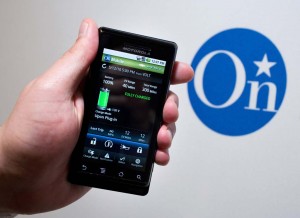
SPX Service Solutions' charging system for the Chevrolet Volt will cost $490 plus about $1,475 for installation.
General Motors and supplier of home charging systems will offer a 240-volt home charging unit for the Chevrolet Volt extended-range electric vehicle for $490.
But GM said installation of the system is estimated to cost $1,475 — so to actually have a working charger expect to spend something closer to $2,000 overall.
The Voltec 240-volt charging system can charge the Volt’s T-shaped 16 kWh in about 4 hours compared to 10 if plugged into a standard 120-volt outlet.
SPX is a supplier of home charging equipment and installation services. SPX is planning to offer several home charging systems for the many electric vehicles automakers plan to bring to market in the next few years.
SPX will manage all aspects of the installation of the Voltec charging system, including the home survey, installation, permitting, Department of Energy and utility coordination and identification of programs and incentives for reduced charging rates.
The Volt, which is scheduled to hit the market later this year, is an electric vehicle with a range of about 40 miles on electricity from its battery pack. After the battery is depleted, the Volt’s gasoline engine kicks in, providing a range of about 310 miles on a tank of gas, making it suitable for longer trips than pure battery-electric vehicles.
The Volt, a five-door, four-passenger car about the size of the new Chevrolet Cruze will sell for $41,000. A $7,500 federal tax credit will bring the price down to $33,500.
A small number of early Volt buyers will be able to get a free charger and buyers will be advised to check state and local incentives that may also reduce the cost.
Nissan, meanwhile, expects buyers to pay about $2,200 to have a 240v charger installed for the Leaf battery-electric vehicle. But it has also noted there are cheaper alternatives.
As with Volt, the industry has adopted a common plug for 240v chargers. That’s good news for buyers who might wish to try one of the new battery cars and switch to a different model in a couple years.
GM does plan to provide a special smartphone app for the Volt to allow a motorist to control the timing of the charge — to take advantage of lower off-peak electric rates, for example — and to pre-heat or cool the vehicle, while still tethered, reducing the use of battery power on a cold or hot day.

